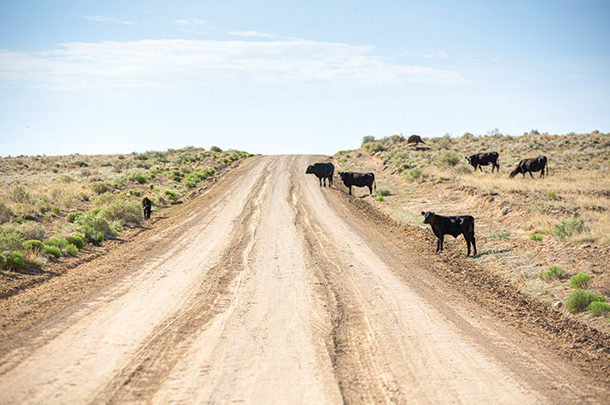For a concept that seems relatively simple, easements can be surprisingly complex and lead to a number of issues for rural landowners. At the most basic level, an easement is simply allowing another person the right to have access to one’s property for a particular purpose.
For example, if a landowner allowed his or her neighbor to cross the landowner’s property in order to reach their own, that would be an easement. If the electric company sought permission to install power lines across one’s land, that would be an easement. If a pipeline company sought to place an underground pipeline over one’s land, that too would be an easement.
There can be several different types of easements that may be created, either by grant or by action.
Express easement
An express easement is the most straightforward option, as it is created when one landowner (that of the “servient estate”) grants another (the owner of the “dominant estate”) the right to take some action on the property. Ideally, all express easements would be written in detail and recorded in the legal deed records of the county where the property is located. This written, recorded easement is generally required in order for the easement to be enforceable against a third party.
For example, assume Bill and his neighbor had a handshake deal where the neighbor was allowed to cross Bill’s property. Many decades later, Bill has sold his property to Jack, and the neighbor passed away and his grandson now owns the adjacent land. If the neighbor did not record the easement in the deed records, it may be difficult to enforce it against Jack.
Implied easement
An implied easement is created when certain conditions are met as required by law. Essentially, the law will impose an easement in certain situations. In Texas, for example, an implied easement by necessity may arise if the landowner seeking the easement can prove: (1) unity of ownership of both estates prior to severance; (2) strict necessity – meaning there is no other way to access the property; and (3) the necessity existed at the time the properties were severed.
As one might imagine, it may be difficult or impossible to prove these elements if the properties were severed a significant time ago. Landowners should consult the law in their own jurisdiction to determine what types of implied easements may exist and the required elements to prove such an easement.
Prescriptive easement
A prescriptive easement can also be known as an “easement by adverse possession.” Essentially, if a person uses another’s property without permission for a statutorily defined period of time, in a manner that is continuous, and open and notorious, a prescriptive easement may be found to exist. The exact requirements, including the length of use necessary, will differ by state. Importantly, note that in order to qualify for a prescriptive easement, the use must be made without permission. If the landowner allowed to use, it cannot qualify.
Easement by estoppel
An easement by estoppel basically arises when the action of a landowner causes another to reasonably believe that he or she has an easement and acts in reliance on that belief. For example, in a fairly recent Texas case, a landowner allowed a prior owner to use a road for 30 years and then did not object when the new owner who purchased the neighboring property used the road and built corrals on the land near the road. The court found that by allowing use for 30 years and then not objecting while the new landowner continued the use and hauled in materials to build the pens, the elements required to prove easement by estoppel were satisfied.
In conclusion, disputes regarding easements can be complicated and expensive, and occur more often than one might realize. It is critical that anyone who relies on using another’s land seek to reduce the agreement to writing and to have it recorded in the deed records. Doing so will save time and money down the road.







